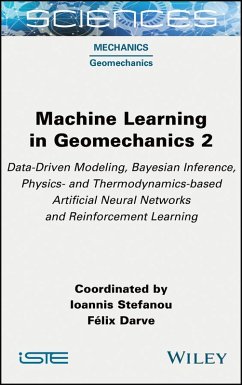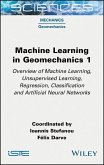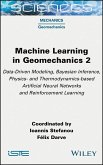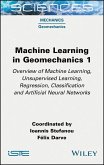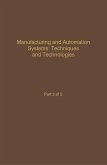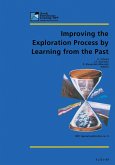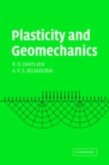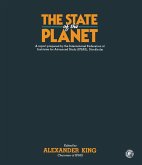Machine Learning in Geomechanics 2 (eBook, PDF)
Data-Driven Modeling, Bayesian Inference, Physics- and Thermodynamics-based Artificial Neural Networks and Reinforcement Learning
Redaktion: Stefanou, Ioannis; Darve, Félix
126,99 €
126,99 €
inkl. MwSt.
Sofort per Download lieferbar

0 °P sammeln
126,99 €
Als Download kaufen

126,99 €
inkl. MwSt.
Sofort per Download lieferbar

0 °P sammeln
Jetzt verschenken
Alle Infos zum eBook verschenken
126,99 €
inkl. MwSt.
Sofort per Download lieferbar
Alle Infos zum eBook verschenken

0 °P sammeln
Machine Learning in Geomechanics 2 (eBook, PDF)
Data-Driven Modeling, Bayesian Inference, Physics- and Thermodynamics-based Artificial Neural Networks and Reinforcement Learning
Redaktion: Stefanou, Ioannis; Darve, Félix
- Format: PDF
- Merkliste
- Auf die Merkliste
- Bewerten Bewerten
- Teilen
- Produkt teilen
- Produkterinnerung
- Produkterinnerung

Bitte loggen Sie sich zunächst in Ihr Kundenkonto ein oder registrieren Sie sich bei
bücher.de, um das eBook-Abo tolino select nutzen zu können.
Hier können Sie sich einloggen
Hier können Sie sich einloggen
Sie sind bereits eingeloggt. Klicken Sie auf 2. tolino select Abo, um fortzufahren.

Bitte loggen Sie sich zunächst in Ihr Kundenkonto ein oder registrieren Sie sich bei bücher.de, um das eBook-Abo tolino select nutzen zu können.
Machine learning has led to incredible achievements in many different fields of science and technology. These varied methods of machine learning all offer powerful new tools to scientists and engineers and open new paths in geomechanics.
The two volumes of Machine Learning in Geomechanics aim to demystify machine learning. They present the main methods and provide examples of its applications in mechanics and geomechanics. Most of the chapters provide a pedagogical introduction to the most important methods of machine learning and uncover the fundamental notions underlying them.
Building…mehr
- Geräte: PC
- mit Kopierschutz
- eBook Hilfe
- Größe: 10.04MB
Andere Kunden interessierten sich auch für
![Machine Learning in Geomechanics 1 (eBook, PDF) Machine Learning in Geomechanics 1 (eBook, PDF)]() Machine Learning in Geomechanics 1 (eBook, PDF)126,99 €
Machine Learning in Geomechanics 1 (eBook, PDF)126,99 €![Machine Learning in Geomechanics 2 (eBook, ePUB) Machine Learning in Geomechanics 2 (eBook, ePUB)]() Machine Learning in Geomechanics 2 (eBook, ePUB)126,99 €
Machine Learning in Geomechanics 2 (eBook, ePUB)126,99 €![Machine Learning in Geomechanics 1 (eBook, ePUB) Machine Learning in Geomechanics 1 (eBook, ePUB)]() Machine Learning in Geomechanics 1 (eBook, ePUB)126,99 €
Machine Learning in Geomechanics 1 (eBook, ePUB)126,99 €![Control and Dynamic Systems V49: Manufacturing and Automation Systems: Techniques and Technologies (eBook, PDF) Control and Dynamic Systems V49: Manufacturing and Automation Systems: Techniques and Technologies (eBook, PDF)]() Control and Dynamic Systems V49: Manufacturing and Automation Systems: Techniques and Technologies (eBook, PDF)40,95 €
Control and Dynamic Systems V49: Manufacturing and Automation Systems: Techniques and Technologies (eBook, PDF)40,95 €![Improving the Exploration Process by Learning from the Past (eBook, PDF) Improving the Exploration Process by Learning from the Past (eBook, PDF)]() Improving the Exploration Process by Learning from the Past (eBook, PDF)158,95 €
Improving the Exploration Process by Learning from the Past (eBook, PDF)158,95 €![Plasticity and Geomechanics (eBook, PDF) Plasticity and Geomechanics (eBook, PDF)]() R. O. DavisPlasticity and Geomechanics (eBook, PDF)60,95 €
R. O. DavisPlasticity and Geomechanics (eBook, PDF)60,95 €![The State of the Planet (eBook, PDF) The State of the Planet (eBook, PDF)]() Alexander KingThe State of the Planet (eBook, PDF)18,95 €
Alexander KingThe State of the Planet (eBook, PDF)18,95 €-
-
-
Machine learning has led to incredible achievements in many different fields of science and technology. These varied methods of machine learning all offer powerful new tools to scientists and engineers and open new paths in geomechanics.
The two volumes of Machine Learning in Geomechanics aim to demystify machine learning. They present the main methods and provide examples of its applications in mechanics and geomechanics. Most of the chapters provide a pedagogical introduction to the most important methods of machine learning and uncover the fundamental notions underlying them.
Building from the simplest to the most sophisticated methods of machine learning, the books give several hands-on examples of coding to assist readers in understanding both the methods and their potential and identifying possible pitfalls.
The two volumes of Machine Learning in Geomechanics aim to demystify machine learning. They present the main methods and provide examples of its applications in mechanics and geomechanics. Most of the chapters provide a pedagogical introduction to the most important methods of machine learning and uncover the fundamental notions underlying them.
Building from the simplest to the most sophisticated methods of machine learning, the books give several hands-on examples of coding to assist readers in understanding both the methods and their potential and identifying possible pitfalls.
Dieser Download kann aus rechtlichen Gründen nur mit Rechnungsadresse in D ausgeliefert werden.
Produktdetails
- Produktdetails
- Verlag: Jossey-Bass
- Seitenzahl: 300
- Erscheinungstermin: 27. September 2024
- Englisch
- ISBN-13: 9781394325641
- Artikelnr.: 72247443
- Verlag: Jossey-Bass
- Seitenzahl: 300
- Erscheinungstermin: 27. September 2024
- Englisch
- ISBN-13: 9781394325641
- Artikelnr.: 72247443
- Herstellerkennzeichnung Die Herstellerinformationen sind derzeit nicht verfügbar.
Ioannis Stefanou is Professor at ECN, France, and leads several geomechanics projects. His main research interests include mechanics, geomechanics, control, induced seismicity and machine learning. Félix Darve is Emeritus Professor at the Soils Solids Structures Risks (3SR) laboratory, Grenoble-INP, Grenoble Alpes University, France. His research focuses on computational geomechanics.
Preface ix
Ioannis STEFANOU and Félix DARVE
Chapter 1. Data-Driven Modeling in Geomechanics .. 1
Konstantinos KARAPIPERIS
1.1. Introduction 2
1.2. Data-driven computational mechanics 3
1.2.1. Cauchy continuum - elasticity 3
1.2.2. Micropolar continuum - elasticity 6
1.2.3. Extension to inelasticity 10
1.2.4. Data sampling 11
1.3. Applications 15
1.4. Conclusions 17
1.5. References 17
Chapter 2 Bayesian Inference in Geomechanics 25
Dhruv V. PATEL, Jonghyun "Harry" LEE, Peter K. KITANIDIS and Eric F. DARVE
2.1. Introduction 26
2.2. Inverse problems 26
2.2.1. Regularization methods 28
2.2.2. Bayesian inversion 30
2.3. Machine learning-assisted Bayesian inference 33
2.3.1. Informative and accurate prior characterization with deep generative
modeling 34
2.3.2. Computationally inexpensive likelihood evaluation with operator
learning 40
2.3.3. Efficient posterior inference in a black-box setting 44
2.4. Conclusion 49
2.5. References 50
Chapter 3 Physics-Informed and Thermodynamics-Based Neural Networks 57
Filippo MASI and Ioannis STEFANOU
3.1. Introduction 58
3.2. Physics-informed neural networks 60
3.2.1. Methodology 61
3.2.2. Hands-on example 63
3.3. Thermodynamics-based neural networks 68
3.3.1. Theoretical framework 70
3.3.2. Methodology 75
3.3.3. Digital twins of granular materials: a pedagogic example 80
3.3.4. Speed up multiscale simulations 87
3.4. Conclusions 93
3.5. Acknowledgments 95
3.6. References 95
Chapter 4 Introduction to Reinforcement Learning with Applications in
Geomechanics 101
Alexandros STATHAS, Diego GUTIÉRREZ-ORIBIO and Ioannis STEFANOU
4.1. Introduction 102
4.2. Reinforcement learning: the basics 106
4.2.1. Basic definitions: deterministic case 106
4.2.2. Probabilistic environment and stochastic policies 120
4.2.3. Function approximation 146
4.2.4. Summing up 153
4.2.5. AC Network 155
4.3. Applications to geomechanics 156
4.3.1. Control theory: the basics 156
4.3.2. Reduced model for earthquakes: the spring-slider 159
4.3.3. Controlling induced seismicity in a geothermal reservoir 171
4.4. Conclusions 178
4.5. Acknowledgment 180
4.6. References 180
Chapter 5 Artificial Neural Networks: Basic Architectures and Training
Strategies 185
Filippo GATTI
5.1. Neural networks 187
5.1.1. The artificial neuron 187
5.1.2. The multi-layer perceptron 191
5.1.3. Why MLP? 196
5.1.4. How to improve the MLP accuracy? 208
5.1.5. From neurons to filters 211
5.1.6. Deep convolutional architectures 227
5.1.7. Time-forward prediction 233
5.1.8. Recurrent neural networks 234
5.1.9. Long-short term memory 240
5.2. Automatic differentiation 243
5.2.1. Updating weights with the chain rule 244
5.2.2. Effective backward propagation 247
5.2.3. Countermeasures to vanishing gradients 255
5.2.4. Back-propagation through time 265
5.3. References 269
List of Authors 277
Index 279
Summary of Volume 1 283
Ioannis STEFANOU and Félix DARVE
Chapter 1. Data-Driven Modeling in Geomechanics .. 1
Konstantinos KARAPIPERIS
1.1. Introduction 2
1.2. Data-driven computational mechanics 3
1.2.1. Cauchy continuum - elasticity 3
1.2.2. Micropolar continuum - elasticity 6
1.2.3. Extension to inelasticity 10
1.2.4. Data sampling 11
1.3. Applications 15
1.4. Conclusions 17
1.5. References 17
Chapter 2 Bayesian Inference in Geomechanics 25
Dhruv V. PATEL, Jonghyun "Harry" LEE, Peter K. KITANIDIS and Eric F. DARVE
2.1. Introduction 26
2.2. Inverse problems 26
2.2.1. Regularization methods 28
2.2.2. Bayesian inversion 30
2.3. Machine learning-assisted Bayesian inference 33
2.3.1. Informative and accurate prior characterization with deep generative
modeling 34
2.3.2. Computationally inexpensive likelihood evaluation with operator
learning 40
2.3.3. Efficient posterior inference in a black-box setting 44
2.4. Conclusion 49
2.5. References 50
Chapter 3 Physics-Informed and Thermodynamics-Based Neural Networks 57
Filippo MASI and Ioannis STEFANOU
3.1. Introduction 58
3.2. Physics-informed neural networks 60
3.2.1. Methodology 61
3.2.2. Hands-on example 63
3.3. Thermodynamics-based neural networks 68
3.3.1. Theoretical framework 70
3.3.2. Methodology 75
3.3.3. Digital twins of granular materials: a pedagogic example 80
3.3.4. Speed up multiscale simulations 87
3.4. Conclusions 93
3.5. Acknowledgments 95
3.6. References 95
Chapter 4 Introduction to Reinforcement Learning with Applications in
Geomechanics 101
Alexandros STATHAS, Diego GUTIÉRREZ-ORIBIO and Ioannis STEFANOU
4.1. Introduction 102
4.2. Reinforcement learning: the basics 106
4.2.1. Basic definitions: deterministic case 106
4.2.2. Probabilistic environment and stochastic policies 120
4.2.3. Function approximation 146
4.2.4. Summing up 153
4.2.5. AC Network 155
4.3. Applications to geomechanics 156
4.3.1. Control theory: the basics 156
4.3.2. Reduced model for earthquakes: the spring-slider 159
4.3.3. Controlling induced seismicity in a geothermal reservoir 171
4.4. Conclusions 178
4.5. Acknowledgment 180
4.6. References 180
Chapter 5 Artificial Neural Networks: Basic Architectures and Training
Strategies 185
Filippo GATTI
5.1. Neural networks 187
5.1.1. The artificial neuron 187
5.1.2. The multi-layer perceptron 191
5.1.3. Why MLP? 196
5.1.4. How to improve the MLP accuracy? 208
5.1.5. From neurons to filters 211
5.1.6. Deep convolutional architectures 227
5.1.7. Time-forward prediction 233
5.1.8. Recurrent neural networks 234
5.1.9. Long-short term memory 240
5.2. Automatic differentiation 243
5.2.1. Updating weights with the chain rule 244
5.2.2. Effective backward propagation 247
5.2.3. Countermeasures to vanishing gradients 255
5.2.4. Back-propagation through time 265
5.3. References 269
List of Authors 277
Index 279
Summary of Volume 1 283
Preface ix
Ioannis STEFANOU and Félix DARVE
Chapter 1. Data-Driven Modeling in Geomechanics .. 1
Konstantinos KARAPIPERIS
1.1. Introduction 2
1.2. Data-driven computational mechanics 3
1.2.1. Cauchy continuum - elasticity 3
1.2.2. Micropolar continuum - elasticity 6
1.2.3. Extension to inelasticity 10
1.2.4. Data sampling 11
1.3. Applications 15
1.4. Conclusions 17
1.5. References 17
Chapter 2 Bayesian Inference in Geomechanics 25
Dhruv V. PATEL, Jonghyun "Harry" LEE, Peter K. KITANIDIS and Eric F. DARVE
2.1. Introduction 26
2.2. Inverse problems 26
2.2.1. Regularization methods 28
2.2.2. Bayesian inversion 30
2.3. Machine learning-assisted Bayesian inference 33
2.3.1. Informative and accurate prior characterization with deep generative
modeling 34
2.3.2. Computationally inexpensive likelihood evaluation with operator
learning 40
2.3.3. Efficient posterior inference in a black-box setting 44
2.4. Conclusion 49
2.5. References 50
Chapter 3 Physics-Informed and Thermodynamics-Based Neural Networks 57
Filippo MASI and Ioannis STEFANOU
3.1. Introduction 58
3.2. Physics-informed neural networks 60
3.2.1. Methodology 61
3.2.2. Hands-on example 63
3.3. Thermodynamics-based neural networks 68
3.3.1. Theoretical framework 70
3.3.2. Methodology 75
3.3.3. Digital twins of granular materials: a pedagogic example 80
3.3.4. Speed up multiscale simulations 87
3.4. Conclusions 93
3.5. Acknowledgments 95
3.6. References 95
Chapter 4 Introduction to Reinforcement Learning with Applications in
Geomechanics 101
Alexandros STATHAS, Diego GUTIÉRREZ-ORIBIO and Ioannis STEFANOU
4.1. Introduction 102
4.2. Reinforcement learning: the basics 106
4.2.1. Basic definitions: deterministic case 106
4.2.2. Probabilistic environment and stochastic policies 120
4.2.3. Function approximation 146
4.2.4. Summing up 153
4.2.5. AC Network 155
4.3. Applications to geomechanics 156
4.3.1. Control theory: the basics 156
4.3.2. Reduced model for earthquakes: the spring-slider 159
4.3.3. Controlling induced seismicity in a geothermal reservoir 171
4.4. Conclusions 178
4.5. Acknowledgment 180
4.6. References 180
Chapter 5 Artificial Neural Networks: Basic Architectures and Training
Strategies 185
Filippo GATTI
5.1. Neural networks 187
5.1.1. The artificial neuron 187
5.1.2. The multi-layer perceptron 191
5.1.3. Why MLP? 196
5.1.4. How to improve the MLP accuracy? 208
5.1.5. From neurons to filters 211
5.1.6. Deep convolutional architectures 227
5.1.7. Time-forward prediction 233
5.1.8. Recurrent neural networks 234
5.1.9. Long-short term memory 240
5.2. Automatic differentiation 243
5.2.1. Updating weights with the chain rule 244
5.2.2. Effective backward propagation 247
5.2.3. Countermeasures to vanishing gradients 255
5.2.4. Back-propagation through time 265
5.3. References 269
List of Authors 277
Index 279
Summary of Volume 1 283
Ioannis STEFANOU and Félix DARVE
Chapter 1. Data-Driven Modeling in Geomechanics .. 1
Konstantinos KARAPIPERIS
1.1. Introduction 2
1.2. Data-driven computational mechanics 3
1.2.1. Cauchy continuum - elasticity 3
1.2.2. Micropolar continuum - elasticity 6
1.2.3. Extension to inelasticity 10
1.2.4. Data sampling 11
1.3. Applications 15
1.4. Conclusions 17
1.5. References 17
Chapter 2 Bayesian Inference in Geomechanics 25
Dhruv V. PATEL, Jonghyun "Harry" LEE, Peter K. KITANIDIS and Eric F. DARVE
2.1. Introduction 26
2.2. Inverse problems 26
2.2.1. Regularization methods 28
2.2.2. Bayesian inversion 30
2.3. Machine learning-assisted Bayesian inference 33
2.3.1. Informative and accurate prior characterization with deep generative
modeling 34
2.3.2. Computationally inexpensive likelihood evaluation with operator
learning 40
2.3.3. Efficient posterior inference in a black-box setting 44
2.4. Conclusion 49
2.5. References 50
Chapter 3 Physics-Informed and Thermodynamics-Based Neural Networks 57
Filippo MASI and Ioannis STEFANOU
3.1. Introduction 58
3.2. Physics-informed neural networks 60
3.2.1. Methodology 61
3.2.2. Hands-on example 63
3.3. Thermodynamics-based neural networks 68
3.3.1. Theoretical framework 70
3.3.2. Methodology 75
3.3.3. Digital twins of granular materials: a pedagogic example 80
3.3.4. Speed up multiscale simulations 87
3.4. Conclusions 93
3.5. Acknowledgments 95
3.6. References 95
Chapter 4 Introduction to Reinforcement Learning with Applications in
Geomechanics 101
Alexandros STATHAS, Diego GUTIÉRREZ-ORIBIO and Ioannis STEFANOU
4.1. Introduction 102
4.2. Reinforcement learning: the basics 106
4.2.1. Basic definitions: deterministic case 106
4.2.2. Probabilistic environment and stochastic policies 120
4.2.3. Function approximation 146
4.2.4. Summing up 153
4.2.5. AC Network 155
4.3. Applications to geomechanics 156
4.3.1. Control theory: the basics 156
4.3.2. Reduced model for earthquakes: the spring-slider 159
4.3.3. Controlling induced seismicity in a geothermal reservoir 171
4.4. Conclusions 178
4.5. Acknowledgment 180
4.6. References 180
Chapter 5 Artificial Neural Networks: Basic Architectures and Training
Strategies 185
Filippo GATTI
5.1. Neural networks 187
5.1.1. The artificial neuron 187
5.1.2. The multi-layer perceptron 191
5.1.3. Why MLP? 196
5.1.4. How to improve the MLP accuracy? 208
5.1.5. From neurons to filters 211
5.1.6. Deep convolutional architectures 227
5.1.7. Time-forward prediction 233
5.1.8. Recurrent neural networks 234
5.1.9. Long-short term memory 240
5.2. Automatic differentiation 243
5.2.1. Updating weights with the chain rule 244
5.2.2. Effective backward propagation 247
5.2.3. Countermeasures to vanishing gradients 255
5.2.4. Back-propagation through time 265
5.3. References 269
List of Authors 277
Index 279
Summary of Volume 1 283
